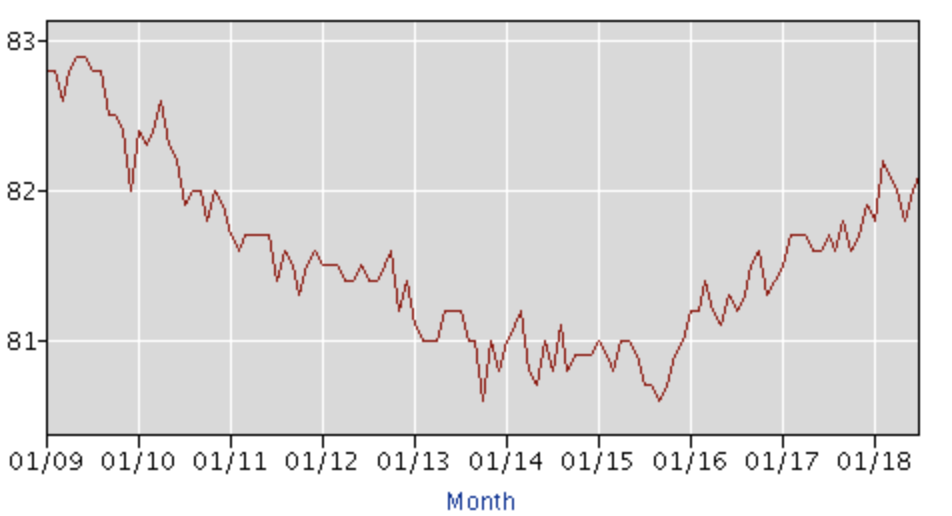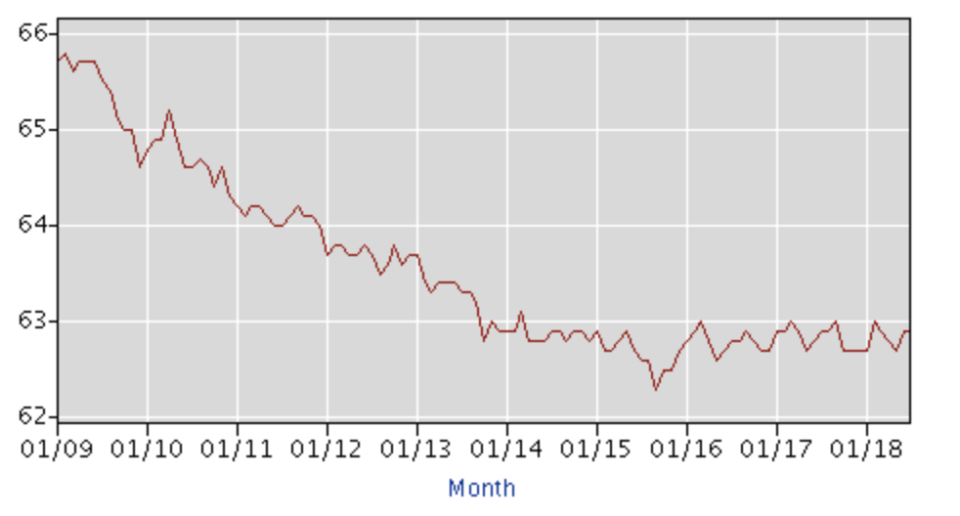The labor market may be even stronger than people realize

The U.S. economy may be even stronger than many economists and market watchers realize. A recent study from the Brookings Institution notes that labor force participation — thought to be an unresponsive casualty of poor demographics and market forces — has picked up significantly over the past few years for key cohort.
While unemployment fell to its lowest point this century in June, the overall labor force participation had been thought to be stuck in neutral, along with wage growth, as two major factors inhibiting a full economic recovery.
However, the Brookings study emphasizes that labor force participation rose among workers aged 25-54 last month to near its levels prior to the financial crisis. The rebound comes after a decades-long swoon in male prime-age participation and a 15-year slide in female prime-age participation.
“The increasing prime age participation rate is a strong sign for the labor market recovery, and it does give us some information about the state of that recovery,” Ryan Nunn, policy director at the Brookings Institution’s Hamilton Project and a principal author of the study, told Yahoo Finance.
Participation among prime-age workers had actually been falling during the recovery under President Barack Obama, but bottomed out in mid-2015 and has been moving higher since. The metric was moving in the opposite direction of overall employment in the United States, which was has risen steadily since the recession ended in 2009.

The puzzle of falling labor force participation — Americans who are able to work but are not employed and not looking for a job — had confounded labor economists for years. The turnaround over the past three years is similarly head scratching, and Nunn says it likely wasn’t a change in policy or government programs that can be credited.
“The increase in labor market tightness … has been happening for a number of years now and I think that we’re seeing the extension of trends that were occurring prior to the current administration,” he said. “I don’t know of any reason to believe that any particular policies of the last two years or so could be linked with these developments.”

Still, it appears the recovery is finally coming to less educated workers who have missed out on the economic boon that has been great for the wealthy and large corporations. The study found that much of the pickup in participation had come from Americans with some college education or less, as the labor market has tightened and employers have relaxed hiring requirements in order to find workers.
Prime-age workers are a major driver of the economy, because they typically have high productivity rates and help push wages higher, spurring increased spending and development. However, the rise in workers for this cohort returning to the job market has largely been lost in the data because the overall labor force participation rate has been stagnant.
That’s because overall the U.S. population is getting older and as more Americans count themselves among the older workers demographic, that weighs on the overall numbers. More older people are working now, but that number is still about half of prime-age workers.
—
See also:
Wall Street managers have cost Americans more than $600 billion over the past decade
It’s the end of the world as we know it, and investors feel bullish
The dollar’s status as the world’s funding currency is in question
Why Trump’s trade war hasn’t tanked the market or the economy yet
Dion Rabouin is a global markets reporter for Yahoo Finance. Follow him on Twitter: @DionRabouin.
Follow Yahoo Finance on Facebook, Twitter, Instagram, and LinkedIn.

